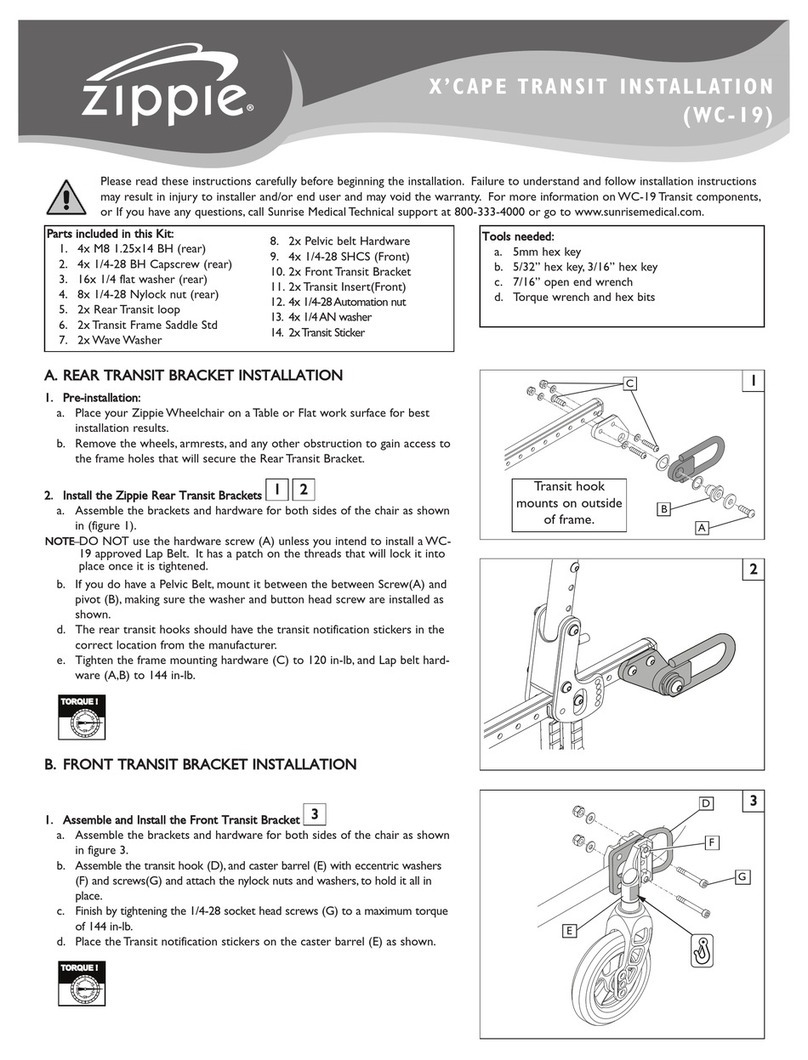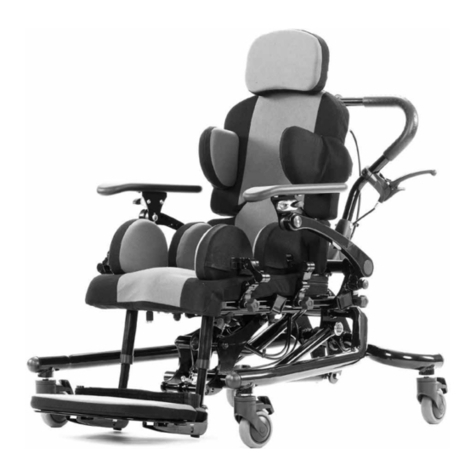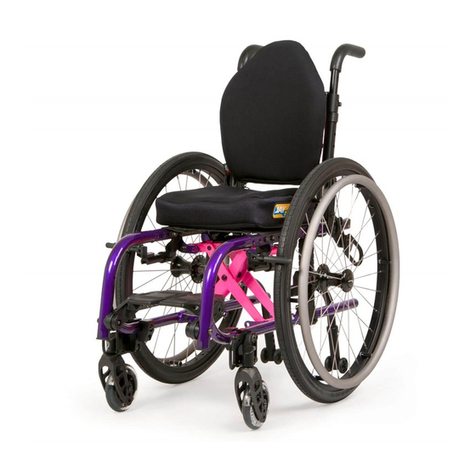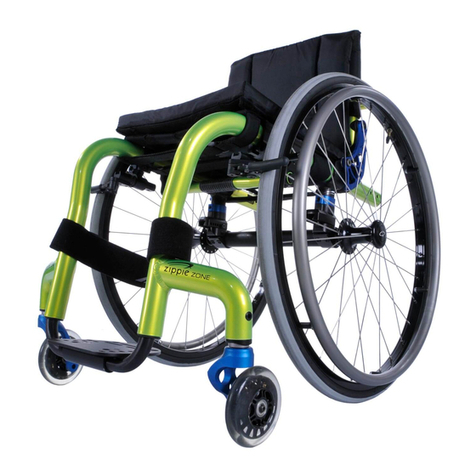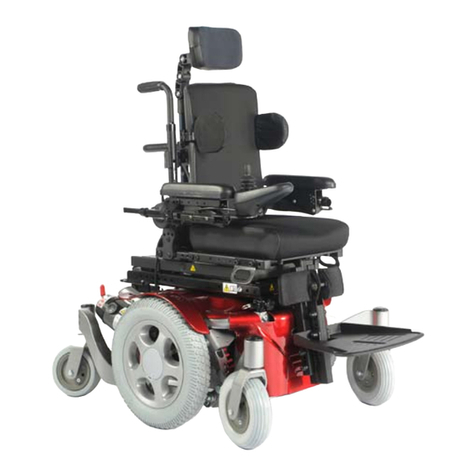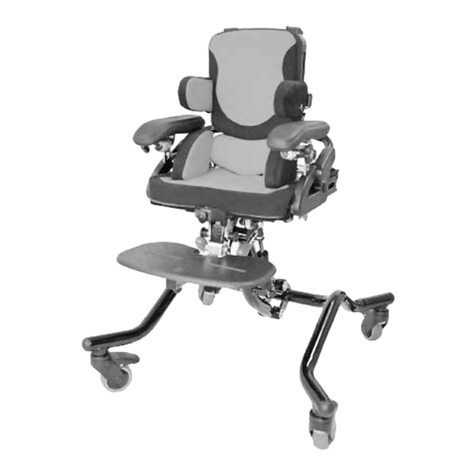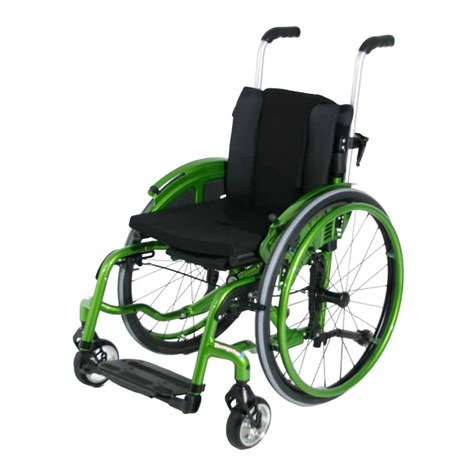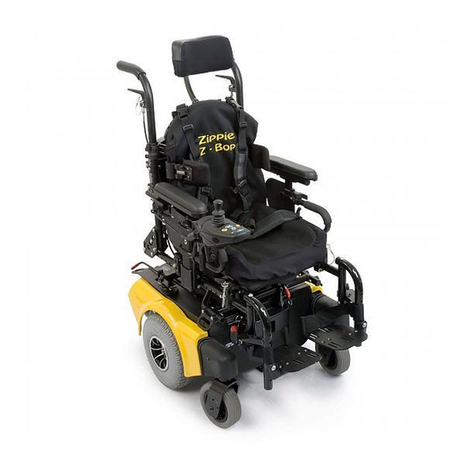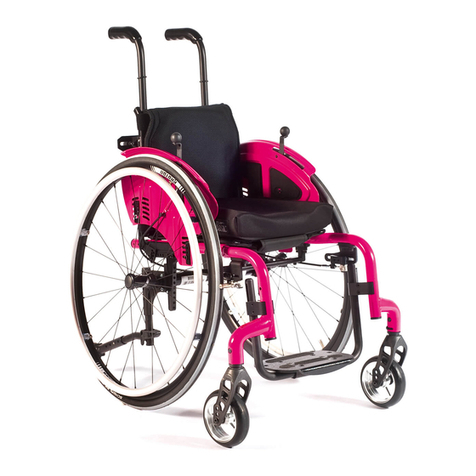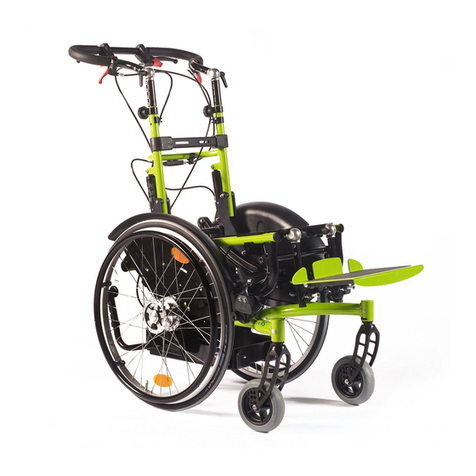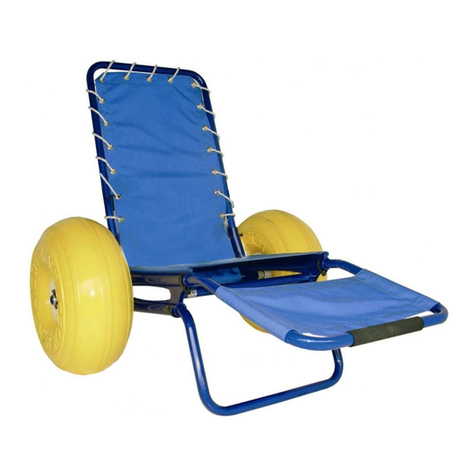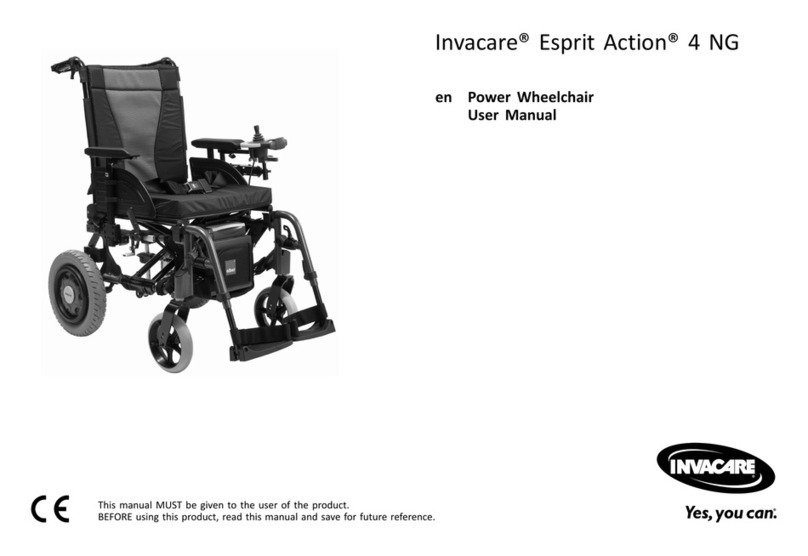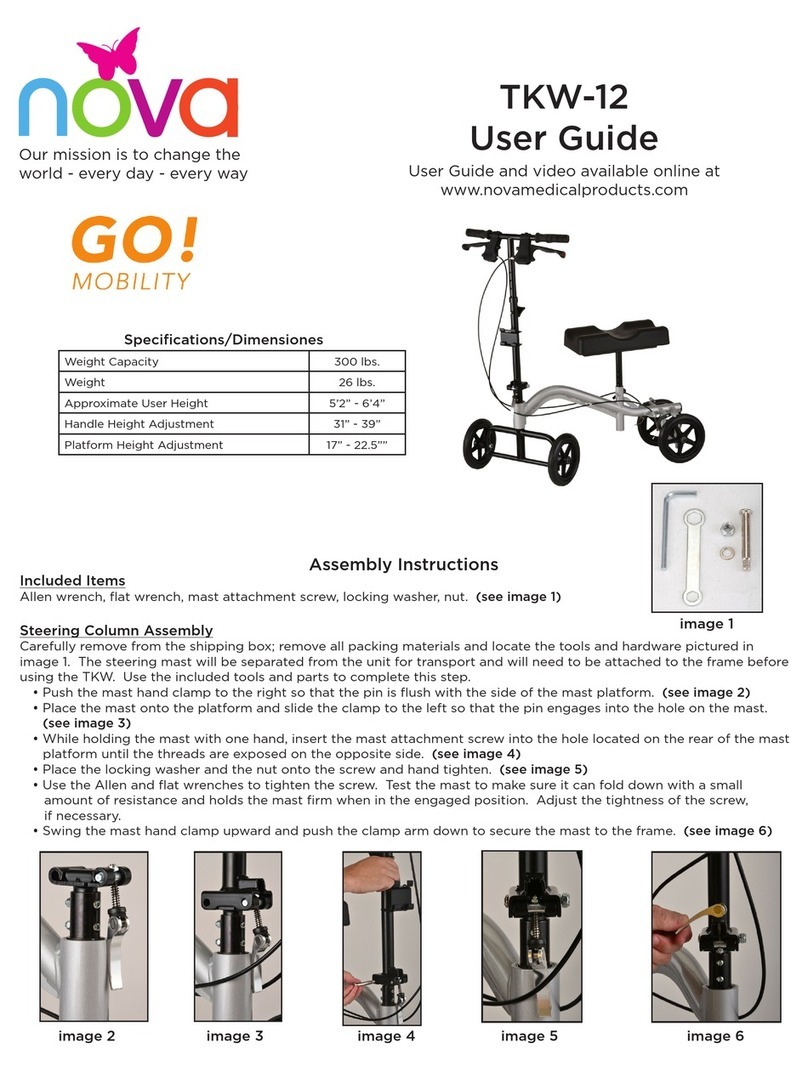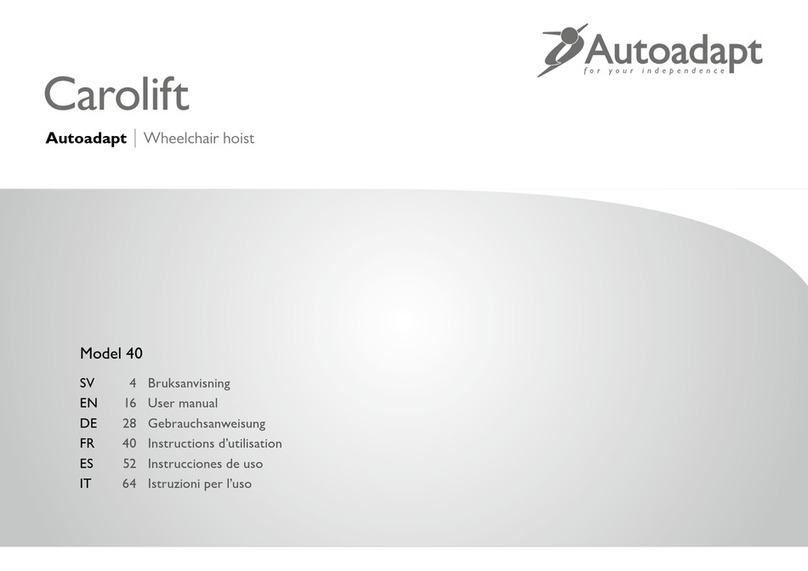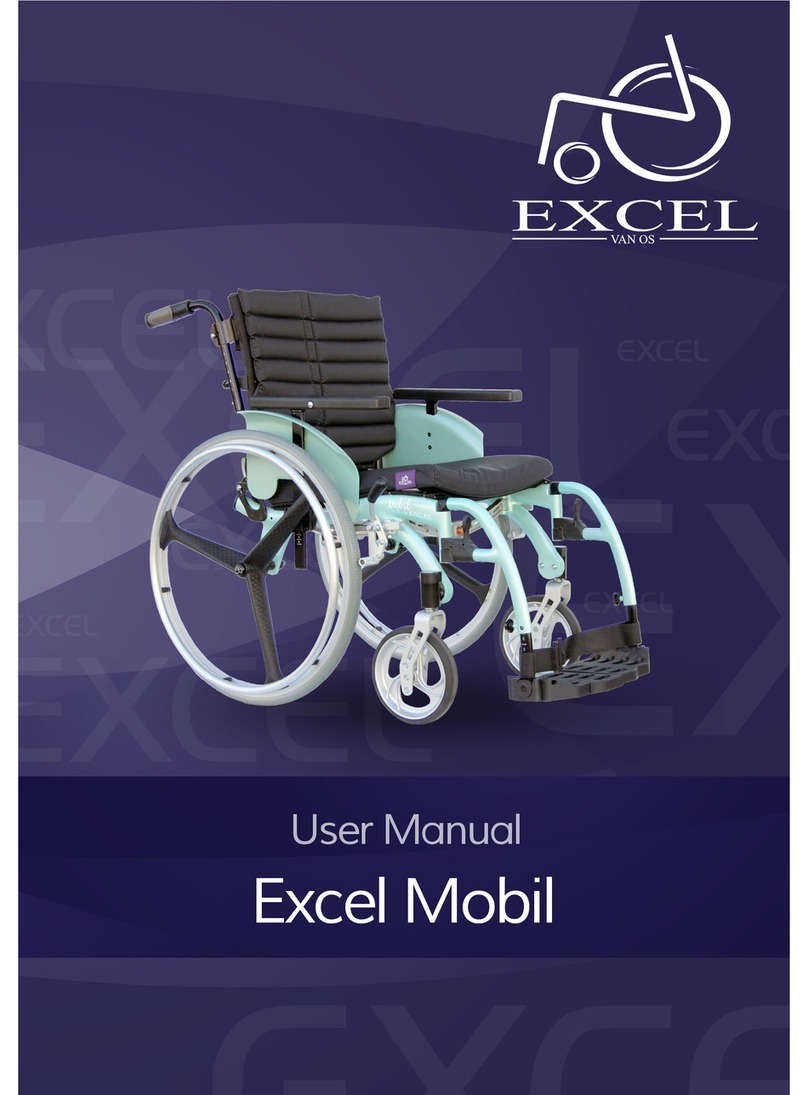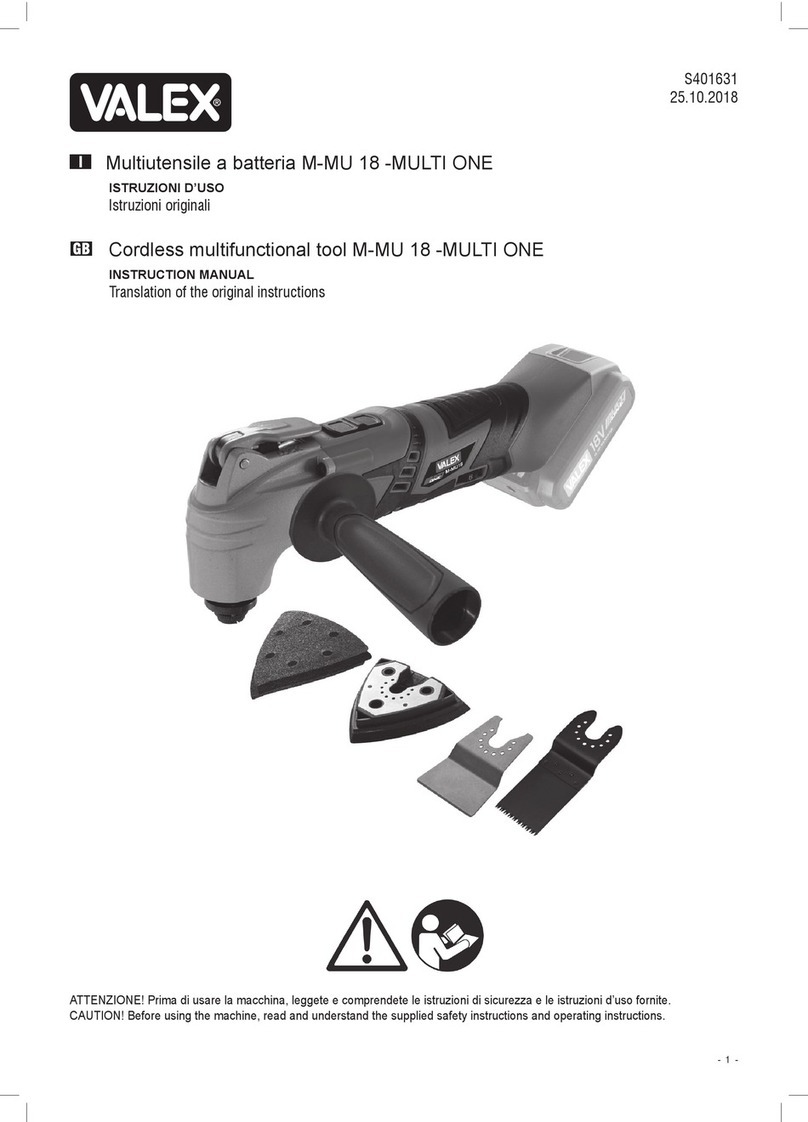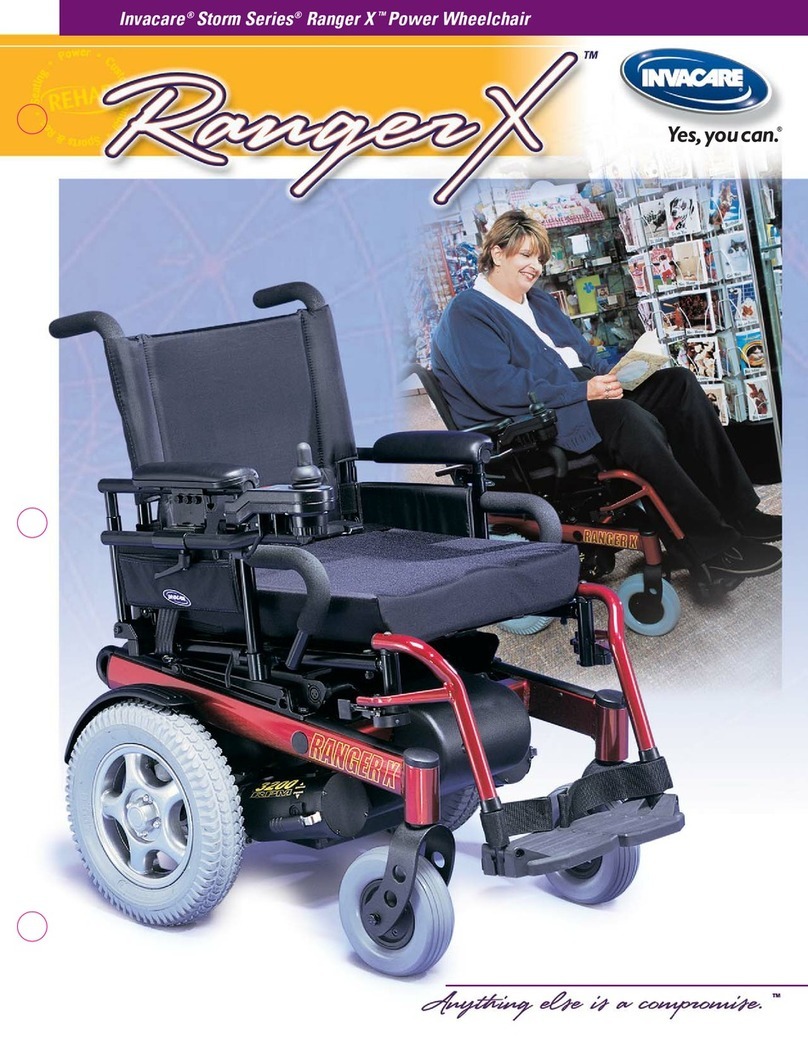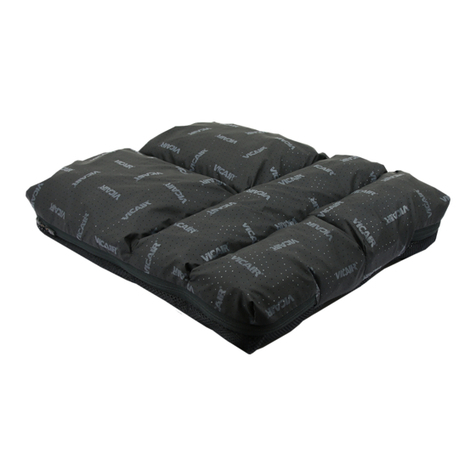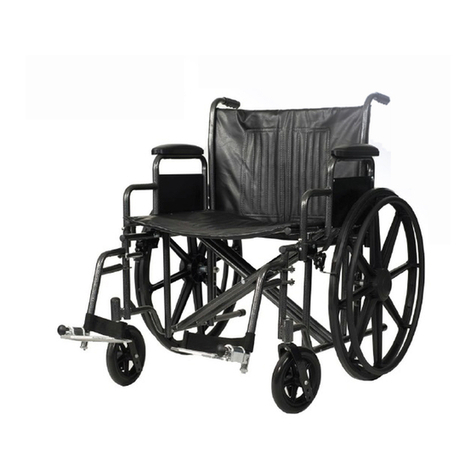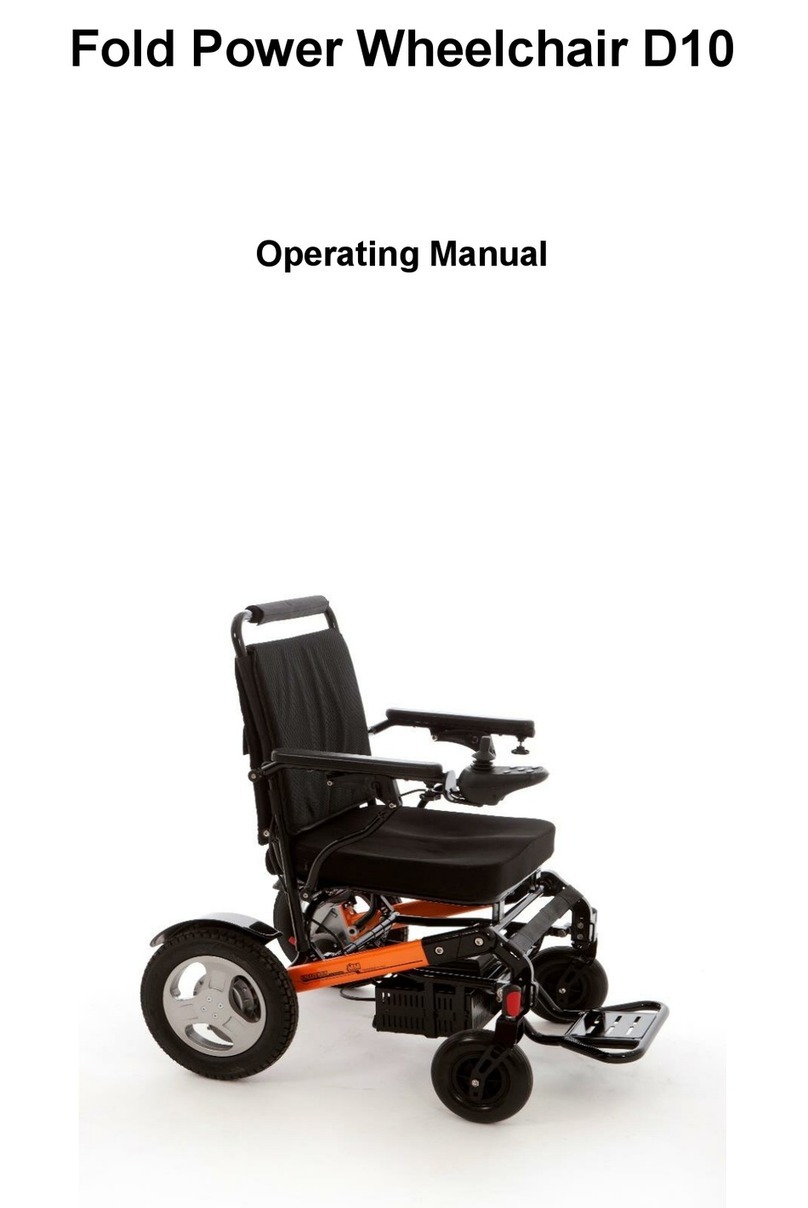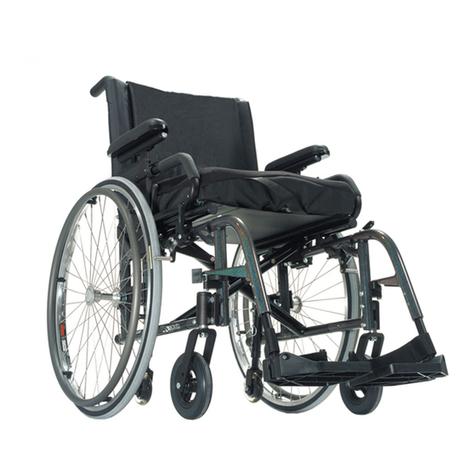
II. TABLE OF CONTENTS
ZIPP I E Z M-310
3127899 Rev. C
I. INTRO UCTION..........................................................................2
III. YOUR CHAIR AN ITS PARTS ................................................4
IV. NOTICE– REA BEFORE USE...................................................5
V. EMI (ELECTROMAGNETIC INTERFERENCE).......................5
A.What is EMI?................................................................................5
B. What effect can EMI have?.......................................................5
C.Sources of EMI ........................................................................5-6
. istance from the Source ........................................................6
E. Immunity Level............................................................................6
F. Report all Suspected EMI Incidents........................................6
G.EMI from Chair ...........................................................................6
H.Head Array Safety and RFI.......................................................6
VI. GENERAL WARNINGS................................................................7
A.Notice to User and Attendants..............................................7
B. Weight Limit................................................................................7
C.Controller Settings.....................................................................7
.Safety Checklist...........................................................................7
E. Changes and Adjustments ........................................................7
F. Accessories ..................................................................................7
G.When Seated in a Parked Wheelchair ..................................8
H.Environmental Conditions........................................................8
I. Terrain ..........................................................................................8
J. Street Use ....................................................................................8
K. Motor Vehicle Safety .................................................................8
L. Center of Balance.......................................................................8
M. Transfers .....................................................................................9
N.Reaching or Leaning...................................................................9
O. ressing or Changing Clothes................................................9
P. Obstacles......................................................................................9
Q. riving in Reverse......................................................................9
R. Ramps, Slopes, and Sidehills.....................................................9
S. To Reduce the Risk of a Fall, Tip-over
or Loss of Control .................................................................10
T. Ramps at Home and Work ...................................................10
U.Wheel Chair Lifts.....................................................................10
V. Curbs and Single Steps............................................................10
W. Stairs .........................................................................................10
X.Escalators ...................................................................................10
VII. WARNINGS: COMPONENTS AN OPTIONS.................11
A.Armrests.....................................................................................11
B. Batteries .....................................................................................11
C.Cushions and Sling Seats ........................................................11
.Fasteners ....................................................................................11
E. Footplate, and Footrests ........................................................11
F. Motor Locks..............................................................................11
G.ON/OFF Switch........................................................................11
H.Pneumatic tires .........................................................................11
I. Positioning Belts .......................................................................11
J. Push Handles .............................................................................11
K. Seating Systems...................................................................11-12
L. Upholstery Fabric.....................................................................12
M.Suspension..................................................................................12
N.Wiring .........................................................................................12
O.Assignable Controls.................................................................12
P. Power Seating (SC & MPC) ...................................................13
Q. S.P.O.T. Power Accessory...................................................13
R. Transit Option and Use..........................................................13
VIII. USE AN MAINTENANCE ......................................................16
A.Introduction...............................................................................16
B. Cleaning ......................................................................................16
C.Storage Tips...............................................................................16
.Tire Pressure.............................................................................16
E. Motor Brushes..........................................................................16
F. isposing of Batteries.............................................................16
G Ordering Parts ..........................................................................16
H.Safety Checklist.........................................................................16
I. Folding Backrest .......................................................................17
J. Manual Recline Operation ....................................................17
K. Swing-in/Swing-out Footrests................................................17
L. Elevating Legrest.......................................................................17
M.Angle Adjustable Centermount Footrest...........................17
N. ual-post Fixed height standard, and ual-post Height
Adjustable Armrests ..............................................................18
O. Single-post Height Adjustable Armrests ...........................18
P. Retractable, Swing-away, and Midline Joystick Mounts...18
Q Motor Lock................................................................................19
R. Battery Removal .......................................................................19
S. Check Out .................................................................................19
IX. CONTROLLER, JOYSTICKS & OPERATING GUI E .......20
A.Controls .....................................................................................20
B. Connectors................................................................................20
C.R-NET Joysticks........................................................................20
.Joystick Buttons and Controls .............................................21
E. LC Screen (Color and advanced) .....................................22
F. Performance Control Settings ..............................................24
G.On-Board Programmer, iagnostic Test Tool, or RNET..
PC Programmer (Option)......................................................24
H.Control +5 assignable buttons..............................................24
I. Joystick Stationary ..................................................................24
J. Thermal Roll-Back....................................................................24
K. Power Recline, Tilt & Lift Operation ..................................24
L. VR2 Joystick...............................................................................25
X. BATTERIES.....................................................................................26
A.Introduction .............................................................................26
B. Charging Your Batteries .......................................................26
C.Battery Charger ......................................................................26
.Connecting Batteries...............................................................27
E. Battery Maintenance................................................................27
F. isposing of Batteries .............................................................27
G.Fuses............................................................................................27
H.Battery Wiring iagram .........................................................27
XI. EALER SERVICE AN A JUSTMENT................................28
A. ealer Service Introduction .................................................28
B. Critical Maintenance Tips .....................................................28
C. Cleaning ....................................................................................28
. Adjustment Notes ..................................................................28
E. Shroud Removal .......................................................................29
F. Battery Removal .......................................................................29
G.Single-post Height-adjustable Armrests..............................30
H.Cantilever Armrests................................................................30
I. Retractable Joystick Mount....................................................30
J. Midline Joystick Mount............................................................30
K. Joystick Controller Position ..................................................31
L. Swing-in/out Footrest Adjustment.......................................31
M.Angle Adjustable Center Mount Footrest ........................31
N.Elevating Legrest Adjustment................................................32
O.Center Mount Hanger Adjustment .....................................32
P. Seat epth Adjustment .........................................................33
Q.Seat Removal.............................................................................33
R. Seat Pan and Back Size Adjustments ...................................33
S. Seat Height Adjustment..........................................................34
T. Seat to Floor Height / Pre-Tilt Positioning ........................34
U.Repairing or Replacing a Tire................................................34
XII. SUNRISE LIMITE WARRANTY.............................................35
